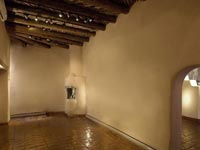
BIOGRAPHY:
DAN OSTERMILLER
The sculpture of Dan Ostermiller is usually given the label “animal sculpture”, however, within that field can be found a wide range of subjects and interpretations. From the barnyard to the vast American Great Plains, from the back porch to the Zambezi Valley, Ostermiller’s animals are studies in elegance and power. They are also depictions of their very essence – the lumbering strength of the grizzly, the feline grace of the cat or the charming vulnerability of the lop-eared rabbit.

His thorough knowledge of animals, acquired from years of experience with his father, Roy Ostermiller, a renowned taxidermist, is the foundation for his work. And like James L. Clark and Carl Akeley, wildlife sculptors who began as taxidermists and curators for the American Museum of Natural History, Ostermiller has built upon this foundation by careful study of animal habits and instincts.
Drawing from his many travels abroad, he creates animal figures in context with their natural surroundings. In the tradition of the French 19th century animaliers, Ostermiller’s work is true to the subject. Yet, his work has a realism that is not just an accurate rendering of the subject, but a sophisticated combination of line and composition.
His thorough grounding in taxidermy lends authority to his designs. But the technique that evolved out of his knowledge of anatomy gives his work spontaneity, setting it outside the realm of mere duplication of an animals’ image. Infusing each design is personality – a combination of the sculptor’s and the subject’s.
Dan Ostermiller has been a catalyst for support and promotion of the arts in his home of Loveland, Colorado. He has been recognized by his peers through election as fellow in the National Sculpture Society and the Society of Animal Artists and served as President of the National Sculpture Society from 2011-2014.


